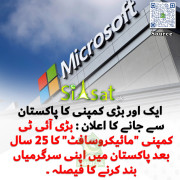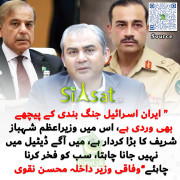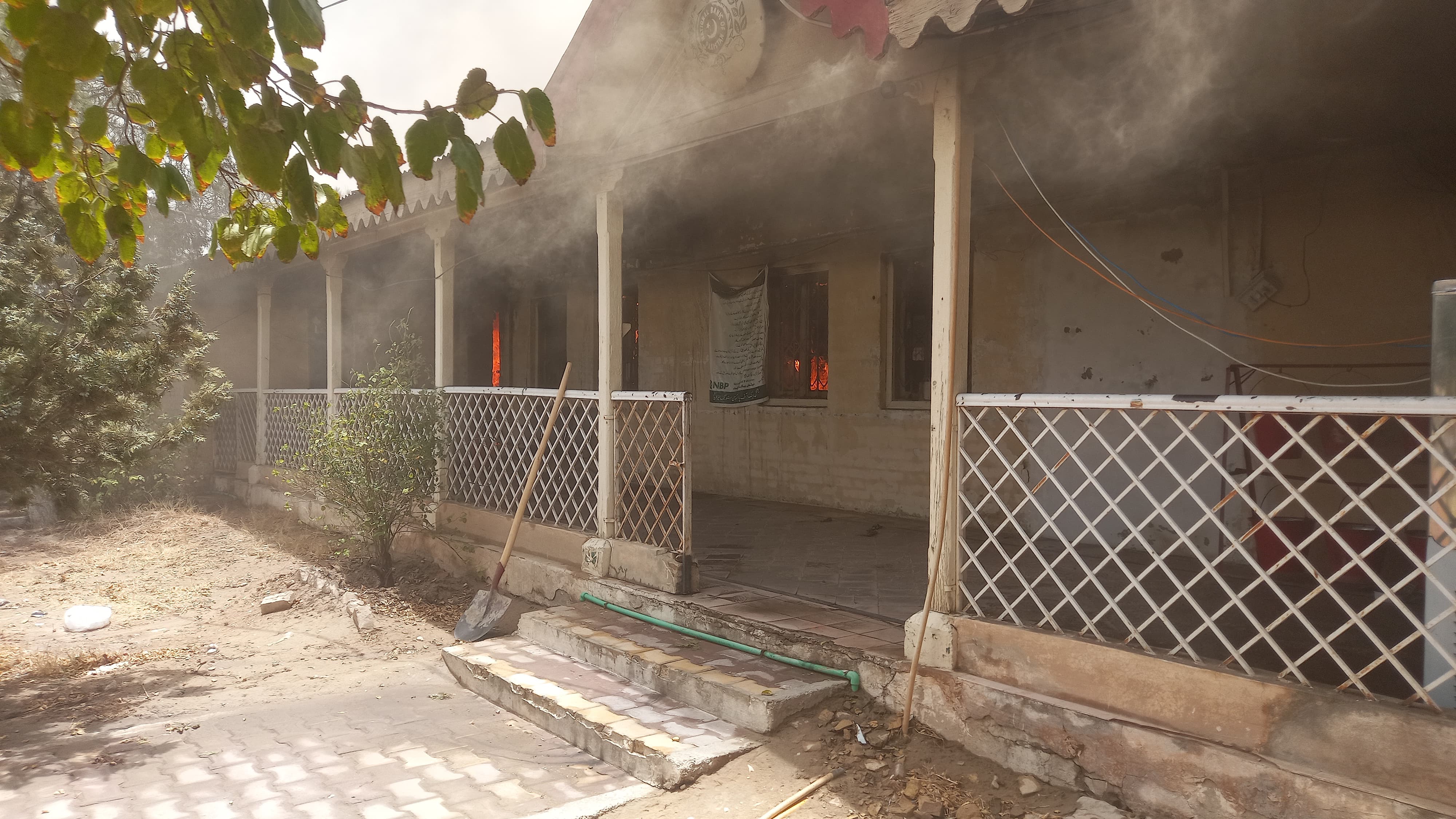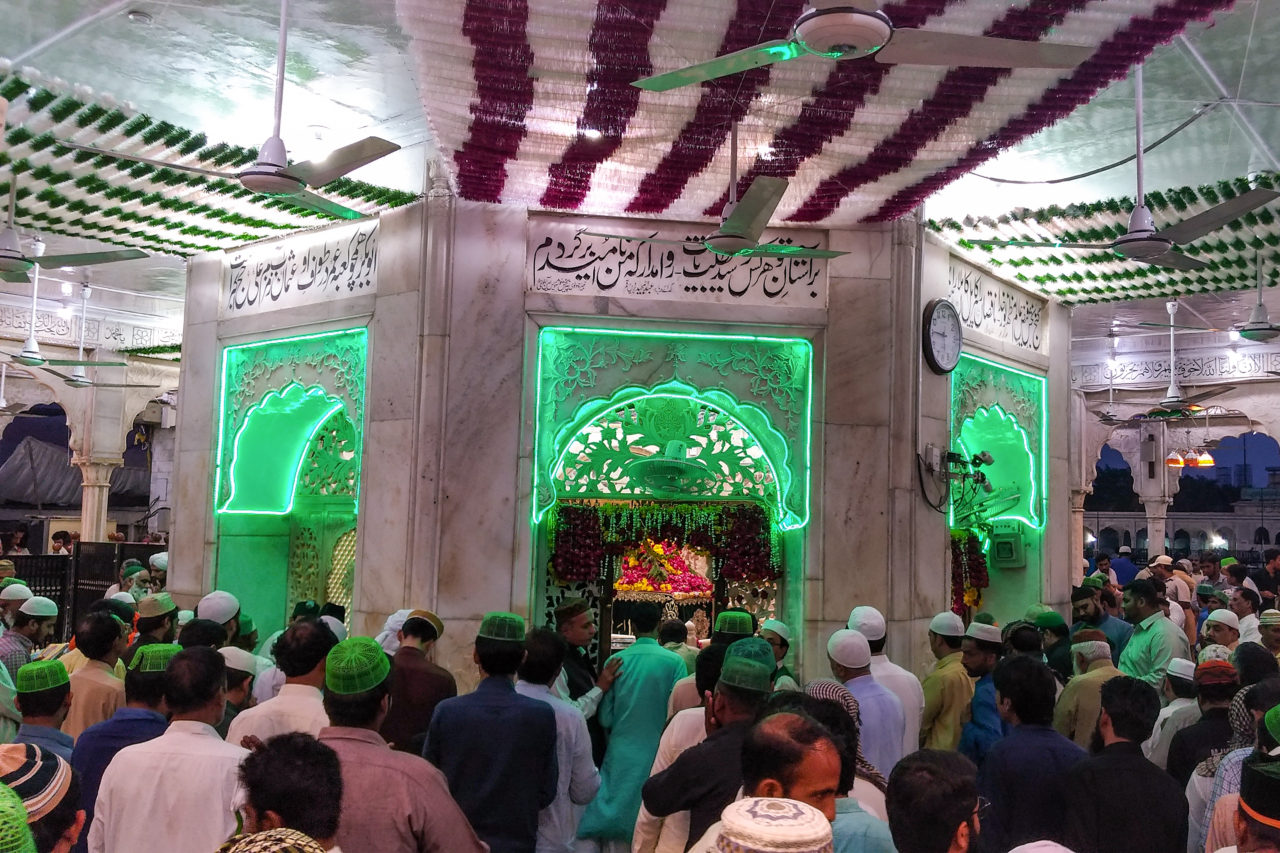contra
Senator (1k+ posts)
Source: http://week.manoramaonline.com/cgi-bin/MMOnline.dll/portal/ep/theWeekContent.do?contentType=EDITORIAL§ionName=COVER%20STORY&programId=1073755753&BV_ID=@@@&contentId=6362808
---------------------------------------------------------------------------------------
By Syed Nazakat
August 4, 2008. Outside the Tribhuvan International Airport in Kathmandu, the local police and Indian intelligence sleuths waited behind a low wall with Himalayan patience. Their quarry: tall, young Fayaz Ahmed Mir, arriving by the PIA flight from Pakistan that afternoon. Mir, the sleuths had been briefed, planned to travel to India after a short break in Kathmandu, where he was to be put up in one of the safe houses of the Pakistani Inter-Services Intelligence. He was no small fish. A trained Lashkar-e-Toiba militant fluent in many languages, Mir’s brief was to organise surgical strikes in India.
The wait was worth every second of it. As soon as Mir stepped out of the airport, the sleuths scaled the wall and moved towards him. He ran for his life, but was not fast enough. The intelligence men whisked him away in a matter of seconds. Days later, they surfaced in India with their man. From here, the story takes a strange twist. On August 11, the Anti-Terrorist Squad of the Uttar Pradesh Police produced him in court claiming that they had arrested the ‘Pakistani national’ from Ghaziabad. In a letter written from jail, which is in
THE WEEK’s possession, Fayaz claims that he is from Kupwara district in Jammu and Kashmir and had crossed over to Pakistan at the age of 16. “I was arrested outside the airport in Nepal and then blindfolded,” he writes. “After a day’s travel, I was kept in a house without windows.” He was then taken in a vehicle the following day. “The vehicle stopped at a border entry point and I saw a hoarding with big letters, Welcome To India.”
Welcome, indeed, to the biggest success story of the Intelligence Bureau and the Research and Analysis Wing in a foreign land. It is an extraordinary story. Never told in the open, only whispered in the highest echelons of India’s spy ring. It concerns the compelling account of a massive covert operation by the IB and RAW to flush out terrorists planning strikes on India from their hideouts in Nepal.
What’s more impressive, the terrorists—around 400 till date according to a top officer involved in the operation—were clandestinely brought to India for questioning, thanks to the absence of an extradition treaty between India and Nepal. Their interrogation revealed the sinister plot their handlers in Pakistan had designed for India, targeting key installations and prominent people including cricketers Sachin Tendulkar and Sourav Ganguly and former president A.P.J. Abdul Kalam.
For the first time, the protagonists of India’s biggest covert operation in a foreign land shared with THE WEEK intimate details of the ongoing operation in Nepal. Their latest catch was Mohammed Omar Madni, Lashkar’s main man in Nepal, who was arrested from ‘Delhi’ on June 4 this year. Said to be very close to Lashkar founder Hafiz Mohammed Saeed, Madni, according to the chargesheet filed by the Delhi Police, had recruited many youths from across India.
Others picked up and brought to India include Mohammad Hassan alias Abu Qasim of Punjab in Pakistan (nabbed from Nepal on April 15, 2007), who was planning a fidayeen attack on Delhi on the occasion of the 150th anniversary of India’s first war of independence in 2007, and Asif Ali alias Anas, who was arrested from Hotel Jagat in Thamel area of Kathmandu on July 11, 2006. The operation, which continues to this day, has been so successful that India is replicating it in Bangladesh. India’s bonhomie with the Bangladeshi agencies has resulted in the arrest of top ULFA functionaries like Arabinda Rajkhowa and militants like T. Nasir, wanted in several terror-related cases in India.
Nepal’s emergence as a terror transit point started in the late 80s. First it was the turn of the Khalistan militants at the height of the Sikh unrest in Punjab, when they were hosted by the ISI in hotels, gurdwaras and residential areas in Muslim-dominated areas of Nepal. The turning point came on December 24, 1999, when five Pakistani terrorists hijacked Indian Airlines flight IC814 to Kandahar. The Delhi-bound flight carried mostly Indians returning after enjoying their holidays in Nepal. They were released on December 31, after India agreed to set free three top terrorists including Maulana Masood Azhar, who went on to found the Jaish-e-Mohammed.
“That [the hijack] was their [terrorists’] biggest success and mistake,” says former RAW chief Vikram Sood. “It was a defining moment for the intelligence agencies.” In an atmosphere of urgency and desolation, Indian intelligence agencies proposed and won approval for what a senior IB officer called a ‘Soft Op’, a secret operation classified at the highest level to find and destroy terror hubs in Nepal. Within the IB and RAW, it is considered their biggest and the most successful covert operation against terrorism.
The IB’s former joint director M.K. Dhar, one of the creators of the rendition programme, told THE WEEK that the axis of terror spreading from Pakistan and Afghanistan to India was often bridged by an unstable Nepal, which was not prepared to deal with the problem of such proportion. “The rendition programme’s goal was to take in people who were planning to target India or have been involved in terrorist attacks in India,” says Dhar. “We had done that with the Sikh militancy. We picked terrorists and brought them to India but the rendition was limited.” According to Dhar, the ISI had made strategic advances into Nepal between 1985 and 2001. “At one time there were over 150 Kashmiri militants in Kathmandu alone,” says Dhar.
In a complex arrangement with Nepal’s intelligence agencies, RAW and the IB started closely monitoring the movement of suspected terrorists in Nepal. The intent was there, backed by necessary action. Post IC814 hijacking, Nepal also woke up to the ISI operations on its soil. It was not news to the Nepali administration that there were safe houses for terrorists all round the country. Most of them were in Jhapa, Ilam, Tapleganj, Panchthar, the Tarai region, Birganj and Kathmandu city.
It was in 1997 that the needle of suspicion began to point at the Pakistan embassy in Nepal. In August 1997, Sikh militant Bhupinder Singh Bhuda of the Khalistan Commando Force was arrested from a hotel in Kathmandu. He was secretly brought to India and during interrogation he gave details about the ISI network in Nepal.
Two months later, six more terrorists were arrested in Nepal and brought to India. During interrogation they dropped the name of Pakistani diplomat Mohammad Arshad Cheema (reportedly then ISI unit chief in Kathmandu) as their point man in Nepal. “Cheema had been running a tight network in Nepal,” says Dhar. “From educational institutions to business firms, he used different ways to gain influence against India. He was kept under surveillance and once his connections with terrorists became evident, the Nepal government deported him.”
According to Sood, there was no commercial justification in having four direct PIA flights a week between Nepal and Pakistan. “Our information was that the ISI was using the PIA flights to bring weapons from Pakistan to Nepal, which would then be passed on to the different terrorist groups in India,” he says.
Mirza Dilshad Beg, a Nepali parliamentarian who had close links with the ISI, played a significant role in the spread of the ISI network in Nepal. With deep contacts in the Nepali establishment, he provided hideouts and other logistics for the terrorists till he was killed by ‘unidentified gunmen’ in 1998. In a report given to Nepalese authorities in 2000, India had revealed the details of Pakistan’s dangerous game in Nepal. Indian intelligence officers have long been aware of the ISI’s activities to fuel anti-India feelings in Nepal, which was all the more evident when actor Hrithik Roshan’s comments on Nepal were played again and again on a local TV channel just to flare up passions against India. The channel, the Indian agencies later came to know, had been funded by the ISI.
---------------------------------------------------------------------------------------
By Syed Nazakat
August 4, 2008. Outside the Tribhuvan International Airport in Kathmandu, the local police and Indian intelligence sleuths waited behind a low wall with Himalayan patience. Their quarry: tall, young Fayaz Ahmed Mir, arriving by the PIA flight from Pakistan that afternoon. Mir, the sleuths had been briefed, planned to travel to India after a short break in Kathmandu, where he was to be put up in one of the safe houses of the Pakistani Inter-Services Intelligence. He was no small fish. A trained Lashkar-e-Toiba militant fluent in many languages, Mir’s brief was to organise surgical strikes in India.
The wait was worth every second of it. As soon as Mir stepped out of the airport, the sleuths scaled the wall and moved towards him. He ran for his life, but was not fast enough. The intelligence men whisked him away in a matter of seconds. Days later, they surfaced in India with their man. From here, the story takes a strange twist. On August 11, the Anti-Terrorist Squad of the Uttar Pradesh Police produced him in court claiming that they had arrested the ‘Pakistani national’ from Ghaziabad. In a letter written from jail, which is in
THE WEEK’s possession, Fayaz claims that he is from Kupwara district in Jammu and Kashmir and had crossed over to Pakistan at the age of 16. “I was arrested outside the airport in Nepal and then blindfolded,” he writes. “After a day’s travel, I was kept in a house without windows.” He was then taken in a vehicle the following day. “The vehicle stopped at a border entry point and I saw a hoarding with big letters, Welcome To India.”
Welcome, indeed, to the biggest success story of the Intelligence Bureau and the Research and Analysis Wing in a foreign land. It is an extraordinary story. Never told in the open, only whispered in the highest echelons of India’s spy ring. It concerns the compelling account of a massive covert operation by the IB and RAW to flush out terrorists planning strikes on India from their hideouts in Nepal.
What’s more impressive, the terrorists—around 400 till date according to a top officer involved in the operation—were clandestinely brought to India for questioning, thanks to the absence of an extradition treaty between India and Nepal. Their interrogation revealed the sinister plot their handlers in Pakistan had designed for India, targeting key installations and prominent people including cricketers Sachin Tendulkar and Sourav Ganguly and former president A.P.J. Abdul Kalam.
For the first time, the protagonists of India’s biggest covert operation in a foreign land shared with THE WEEK intimate details of the ongoing operation in Nepal. Their latest catch was Mohammed Omar Madni, Lashkar’s main man in Nepal, who was arrested from ‘Delhi’ on June 4 this year. Said to be very close to Lashkar founder Hafiz Mohammed Saeed, Madni, according to the chargesheet filed by the Delhi Police, had recruited many youths from across India.
Others picked up and brought to India include Mohammad Hassan alias Abu Qasim of Punjab in Pakistan (nabbed from Nepal on April 15, 2007), who was planning a fidayeen attack on Delhi on the occasion of the 150th anniversary of India’s first war of independence in 2007, and Asif Ali alias Anas, who was arrested from Hotel Jagat in Thamel area of Kathmandu on July 11, 2006. The operation, which continues to this day, has been so successful that India is replicating it in Bangladesh. India’s bonhomie with the Bangladeshi agencies has resulted in the arrest of top ULFA functionaries like Arabinda Rajkhowa and militants like T. Nasir, wanted in several terror-related cases in India.
Nepal’s emergence as a terror transit point started in the late 80s. First it was the turn of the Khalistan militants at the height of the Sikh unrest in Punjab, when they were hosted by the ISI in hotels, gurdwaras and residential areas in Muslim-dominated areas of Nepal. The turning point came on December 24, 1999, when five Pakistani terrorists hijacked Indian Airlines flight IC814 to Kandahar. The Delhi-bound flight carried mostly Indians returning after enjoying their holidays in Nepal. They were released on December 31, after India agreed to set free three top terrorists including Maulana Masood Azhar, who went on to found the Jaish-e-Mohammed.
“That [the hijack] was their [terrorists’] biggest success and mistake,” says former RAW chief Vikram Sood. “It was a defining moment for the intelligence agencies.” In an atmosphere of urgency and desolation, Indian intelligence agencies proposed and won approval for what a senior IB officer called a ‘Soft Op’, a secret operation classified at the highest level to find and destroy terror hubs in Nepal. Within the IB and RAW, it is considered their biggest and the most successful covert operation against terrorism.
The IB’s former joint director M.K. Dhar, one of the creators of the rendition programme, told THE WEEK that the axis of terror spreading from Pakistan and Afghanistan to India was often bridged by an unstable Nepal, which was not prepared to deal with the problem of such proportion. “The rendition programme’s goal was to take in people who were planning to target India or have been involved in terrorist attacks in India,” says Dhar. “We had done that with the Sikh militancy. We picked terrorists and brought them to India but the rendition was limited.” According to Dhar, the ISI had made strategic advances into Nepal between 1985 and 2001. “At one time there were over 150 Kashmiri militants in Kathmandu alone,” says Dhar.
In a complex arrangement with Nepal’s intelligence agencies, RAW and the IB started closely monitoring the movement of suspected terrorists in Nepal. The intent was there, backed by necessary action. Post IC814 hijacking, Nepal also woke up to the ISI operations on its soil. It was not news to the Nepali administration that there were safe houses for terrorists all round the country. Most of them were in Jhapa, Ilam, Tapleganj, Panchthar, the Tarai region, Birganj and Kathmandu city.
It was in 1997 that the needle of suspicion began to point at the Pakistan embassy in Nepal. In August 1997, Sikh militant Bhupinder Singh Bhuda of the Khalistan Commando Force was arrested from a hotel in Kathmandu. He was secretly brought to India and during interrogation he gave details about the ISI network in Nepal.
Two months later, six more terrorists were arrested in Nepal and brought to India. During interrogation they dropped the name of Pakistani diplomat Mohammad Arshad Cheema (reportedly then ISI unit chief in Kathmandu) as their point man in Nepal. “Cheema had been running a tight network in Nepal,” says Dhar. “From educational institutions to business firms, he used different ways to gain influence against India. He was kept under surveillance and once his connections with terrorists became evident, the Nepal government deported him.”
According to Sood, there was no commercial justification in having four direct PIA flights a week between Nepal and Pakistan. “Our information was that the ISI was using the PIA flights to bring weapons from Pakistan to Nepal, which would then be passed on to the different terrorist groups in India,” he says.
Mirza Dilshad Beg, a Nepali parliamentarian who had close links with the ISI, played a significant role in the spread of the ISI network in Nepal. With deep contacts in the Nepali establishment, he provided hideouts and other logistics for the terrorists till he was killed by ‘unidentified gunmen’ in 1998. In a report given to Nepalese authorities in 2000, India had revealed the details of Pakistan’s dangerous game in Nepal. Indian intelligence officers have long been aware of the ISI’s activities to fuel anti-India feelings in Nepal, which was all the more evident when actor Hrithik Roshan’s comments on Nepal were played again and again on a local TV channel just to flare up passions against India. The channel, the Indian agencies later came to know, had been funded by the ISI.
Last edited:


























